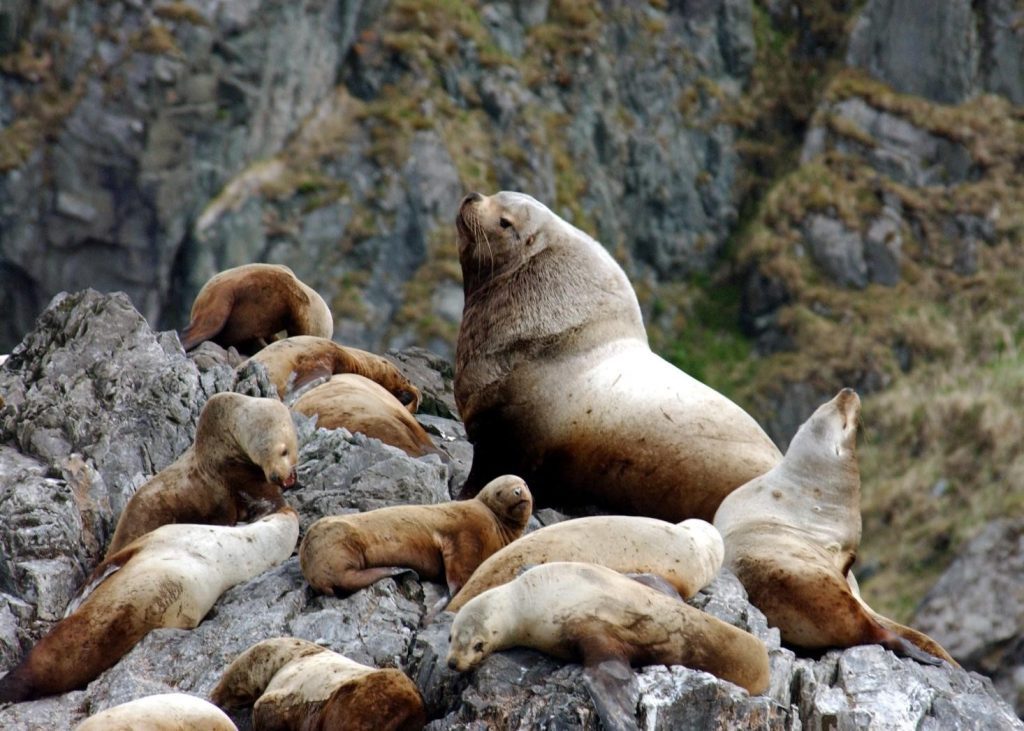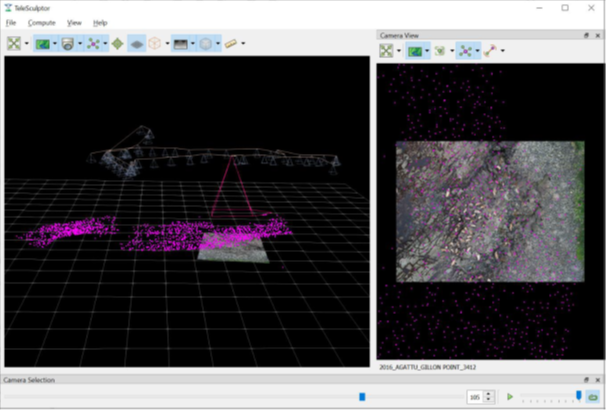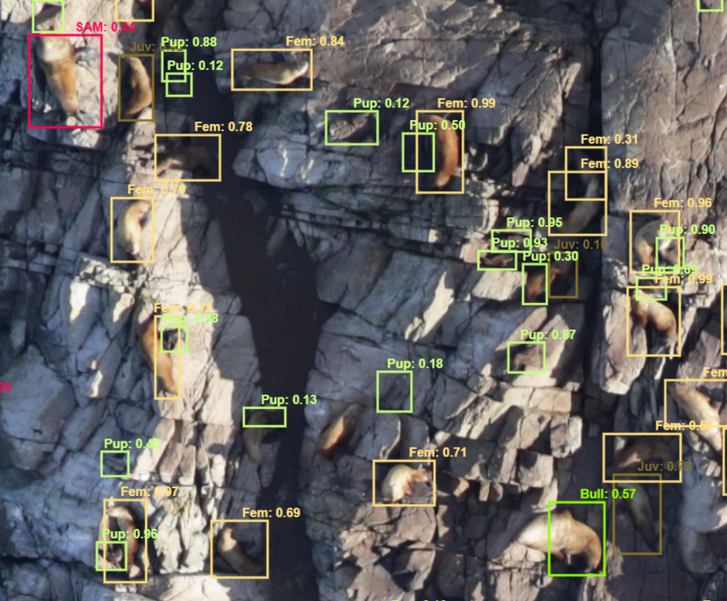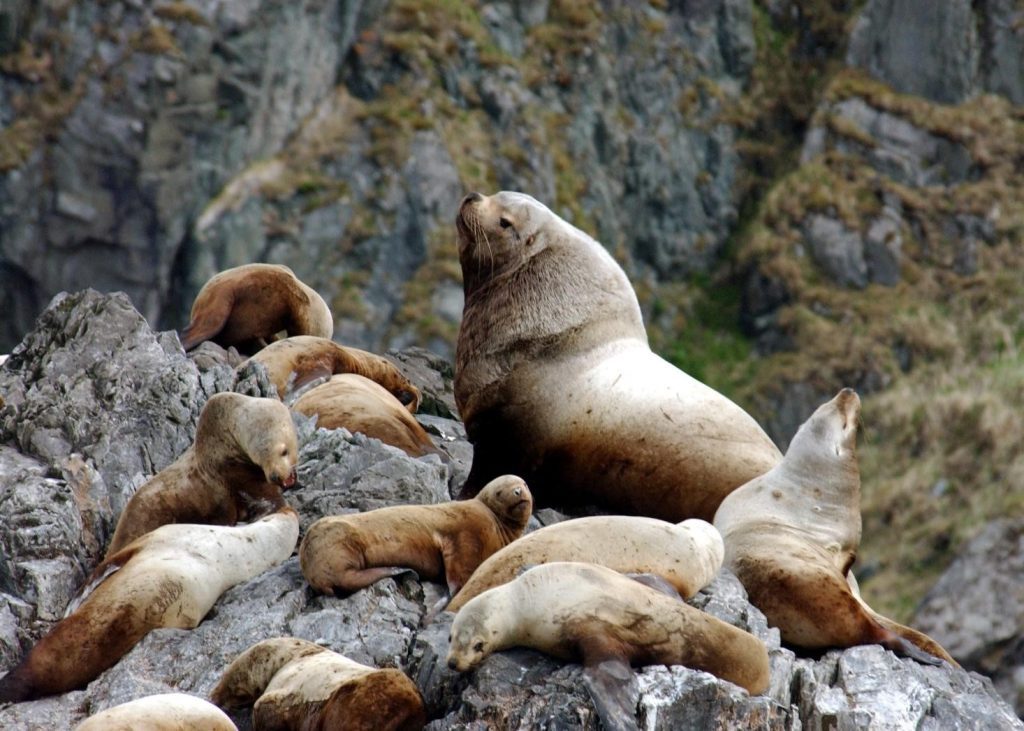Article and Figures Provided By: Katie Sweeney, Marine Mammal Laboratory, Alaska Fisheries Science Center, NOAA Fisheries
Every year, Alaska Fisheries Science Center’s Marine Mammal Laboratory of NOAA Fisheries uses crewed and uncrewed systems to conduct aerial surveys of known Steller sea lion sites across Alaska (Figure 1). These surveys are essential to monitoring the endangered western population of Steller sea lions in Alaska. While the population as a whole has begun to show signs of recovery, one region in the westernmost part of the population range has declined 94% in the last 40 years (showing no signs of recovery), and rookeries – sites where sea lions mate, give birth, and rest – have begun to disappear. In the Gulf of Alaska, anomalous warm water events beginning in 2014 are becoming more commonplace and are likely causing the observed declines in the area – an area which was previously showing signs of sea lion population recovery and began to increase in 2002.

The survey team captures aerial visual imagery over these sites, which the scientists process in the lab to count sea lions hauled out on land. This process is time intensive, and it requires two full-time biologists working independently to complete. Firstly, the imagery is manually processed by puzzling imagery together and drawing lines between images to eliminate double counting from overlapping portions of the images. The counting starts by placing a color coordinated dot (indicating one of the five age and sex classes) on each individual. This process is time intensive, and it requires two full-time biologists working independently for up to four months to complete.
With the rise of artificial intelligence (AI) comes great opportunities for automating data processing. The Marine Mammal Laboratory is working with AI experts to automate image processing and counting of Steller sea lions from survey imagery. The program is being developed to process imagery in a way that stitches images together for counting (Figure 2) and for detecting sea lions by their age and sex class (Figure 3). AI is not yet 100% accurate, so there is still work to do in order to integrate this program into the counting workflow.




With the adoption of this program, the hope is that it will greatly reduce the amount of time necessary to collect final counts. In fact, this program could reduce the time required by 80% and expedite reporting of counts to stakeholders. Counts are used in many ways, including in ecosystem-based modeling and to inform the stakeholders that set fishing quotas. With the reduction in time, biologists can focus on other important NOAA missions managing protected species and sustainable fisheries.
AI is a relatively new technology and is being fostered government-wide in order to increase efficiency. It is continuously evolving. The proposed program could be adapted and/or built upon for application to other marine mammal target detection scenarios. Each of the developing software products are to be ‘open-source’ and available freely to the public.
This innovative technology and corresponding operations were funded and supported by the OAR Uncrewed Systems Research Transition Office (UxSRTO).

